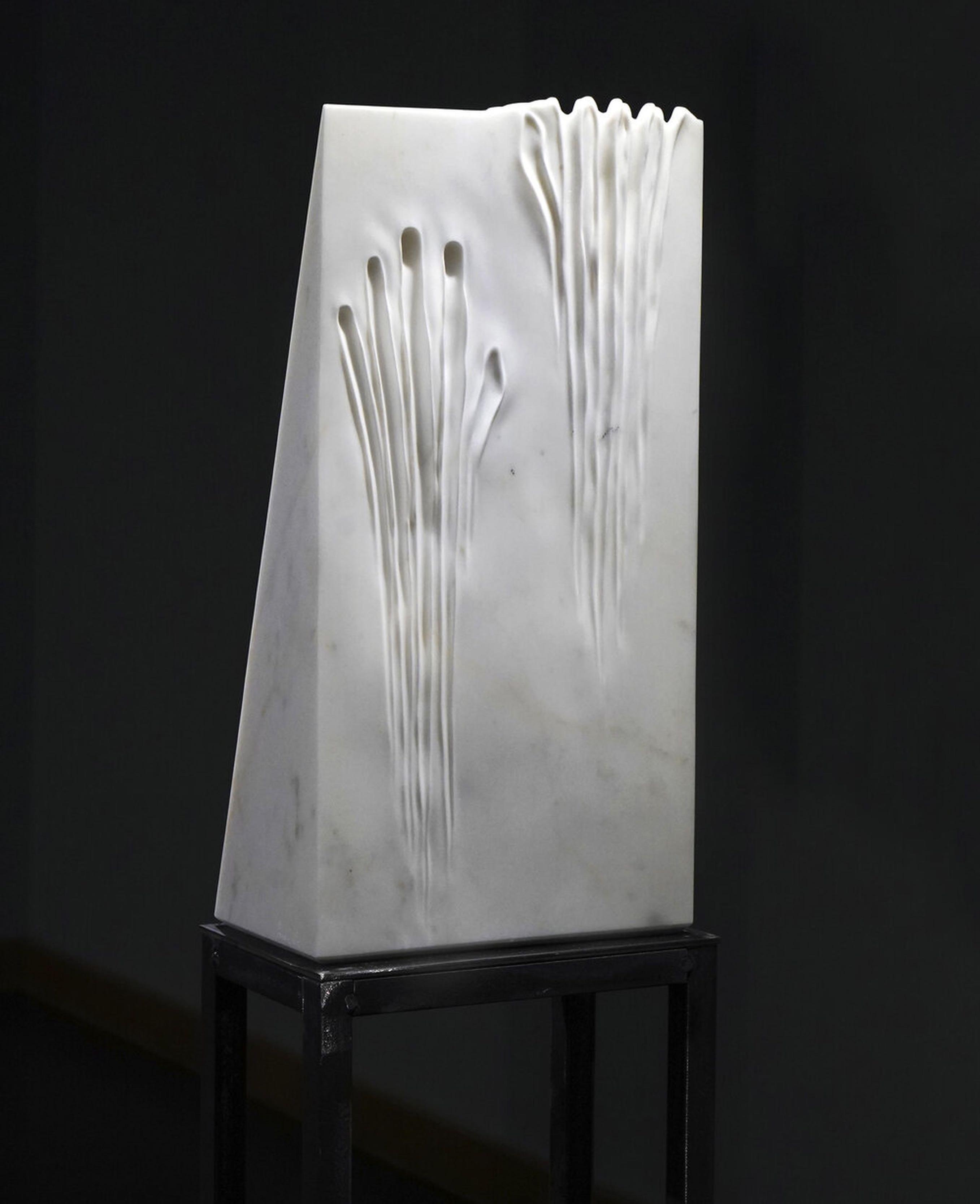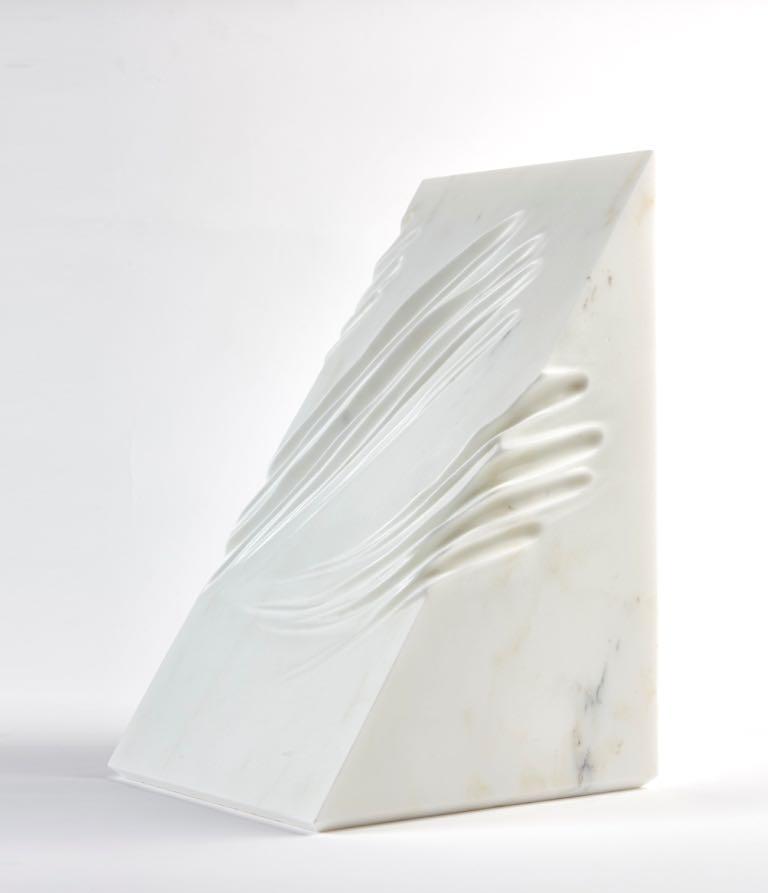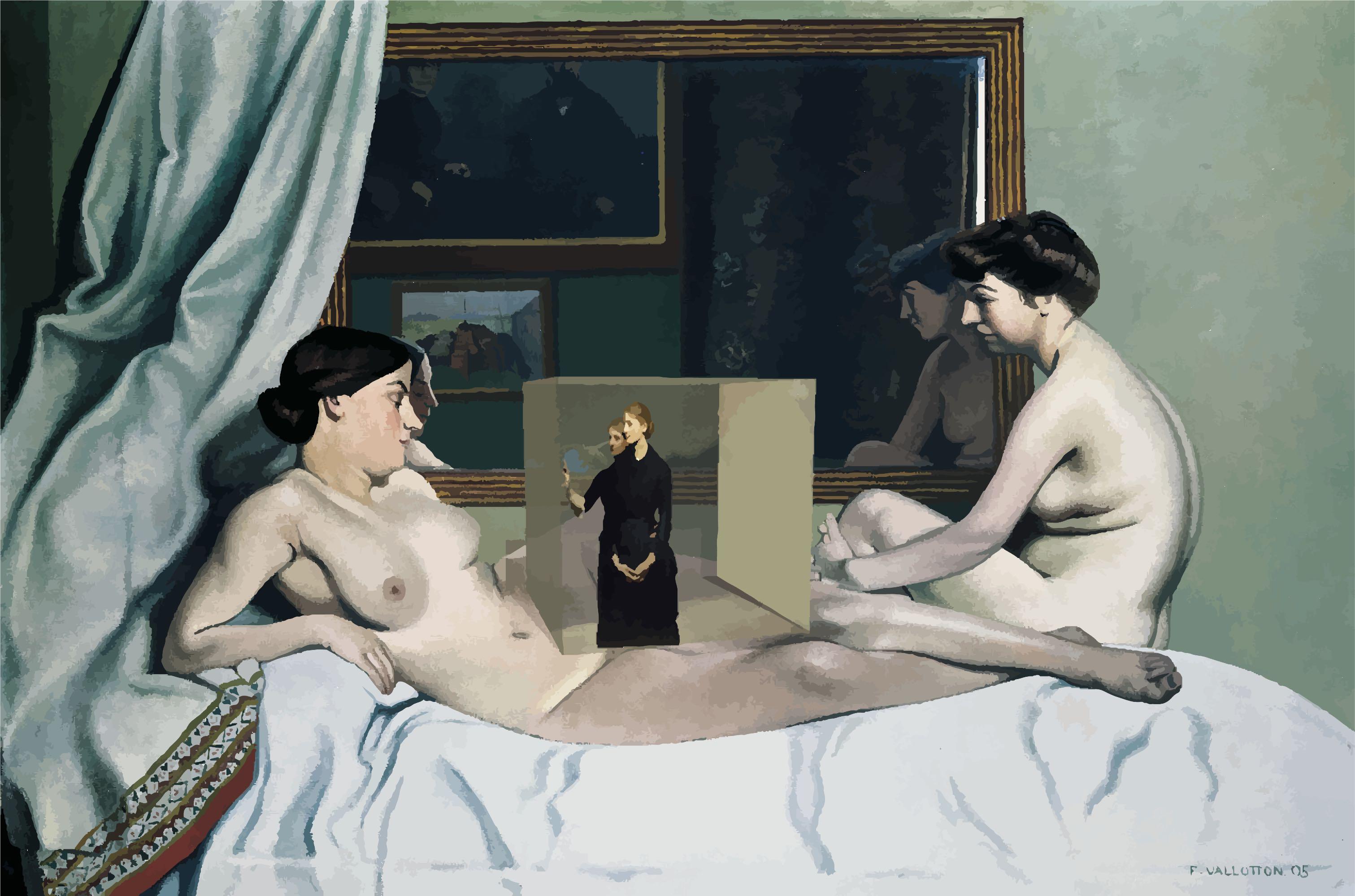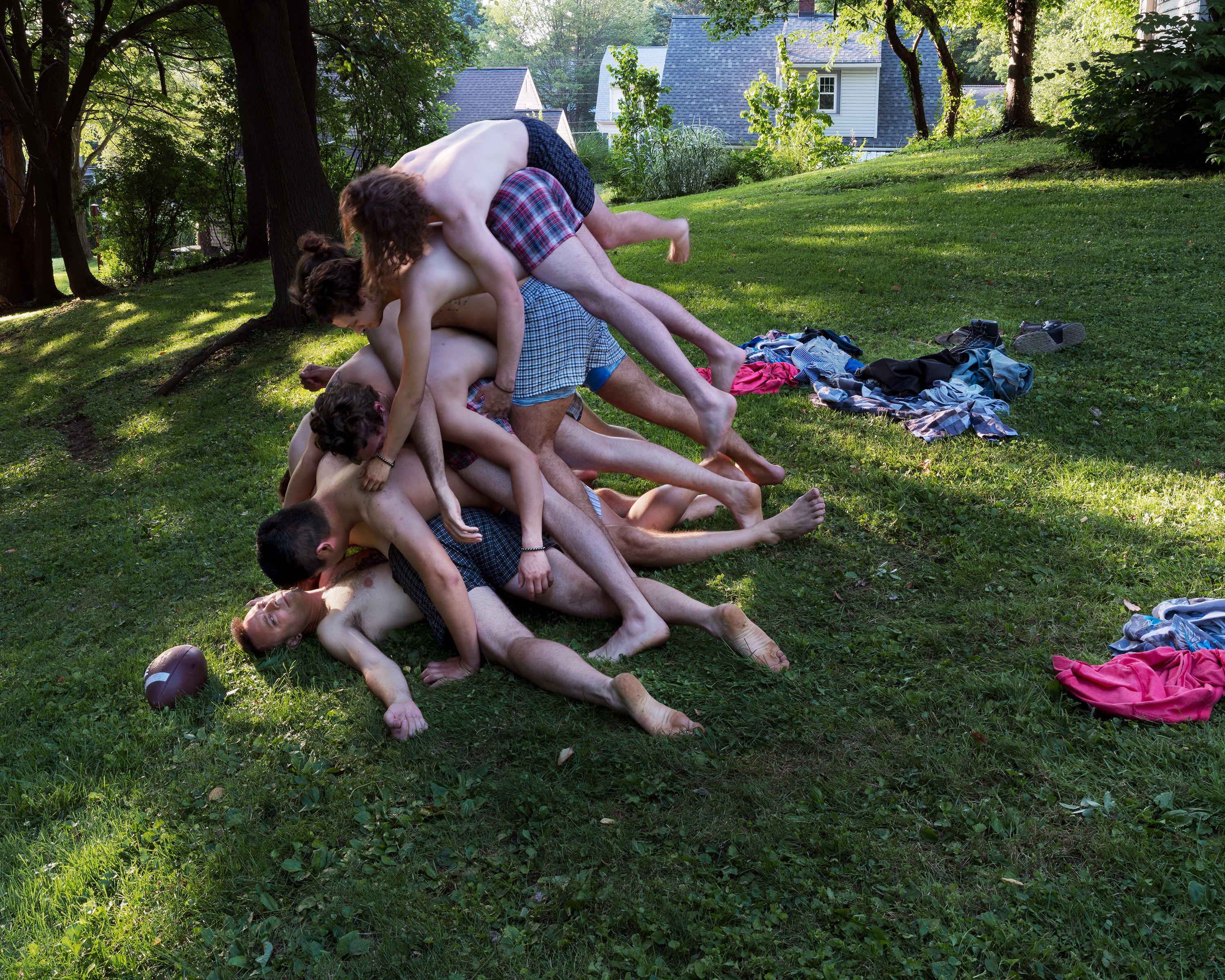
17 minute read
Anne Cecile Surga
Fleeting Emotions Set in Stone
Anne Cecile Surga
Foix, FR www.annececilesurga.com
“I explore the extent of the personal and the emotional, and how our contemporary society affects our way of living—of feeling as well as our way of developing the notion of self.
I am interested in the way in which humans continue to be faithful to themselves despite the daily violence that society forces us to face, but also sometimes to commit towards others. My works can be understood as elaborations of emotional reactions to societal problems: indeed, I am not trying to denounce the underlying problem, but I aspire to highlight the feeling that this or that situation gives birth in us.
My work is concerned with representing feelings, especially the most fleeting and subtle, which arise from complex situations on which we have trouble putting words. I'm not trying to explain or understand the problem, but rather to examine how it makes us feel, and our approaches, solutions and limitations to this complexity. I position myself not in the representation of the problem, but in the strategies put in place to transcend it.
As a woman, my work reflects the particular challenges that I face in my private life, and I believe that this also illustrates and comments on the societal problems inherent in our time. ”
Anne Cecile Surga And You Like It (The Female Gaze), 2019 Pink Portuguese Marble 44 x 14 x 31 cm
Anne Cecile Surga Untitled, 2019 Statuario Carrara Marble 56 x 28.5 x 17 cm
Anne Cecile Surga was born in 1987, in Lavelanet, France. She demonstrated a natural interest in art and other manual activities during her childhood, and in the year 2000 she entered her first drawing and painting class. She learned classical rules of compositions, anatomy, and harmony of colors along with different techniques such as drawing, pastel, china ink and oil painting. This first classical study of art would be the foundation for the artistic development to come.
Anne Cecile enrolled in a business school in 2006, while studying clay sculpture in the evening. She later graduated with a Master in Business Administration from the Florida Gulf Coast University. In 2012, she went to New York City where she graduated with a Master in Art History from Christie’s Education. During her time in New York, she studied metal sculpture and écorché sculpture and the Art Student League.
Then, in 2013 Anne Cecile stayed at the Fundación Pablo Atchugarry where she learned how to cut marble. Following this experience, marble became her main material. In 2015, she opened her studio in the Pyrenean Mountains in France, where she still lives and works.
Her works has been shown internationally, it can be found in the public collection of Museo MUST, Vimercate, Italy, and in the private collection of Pablo Atchugarry. Anne Cecile has won several prizes for her work, including the YICCA ArtPrizein 2017, the MaryBethGutkowski Scholarshipin 2019, and the OnFormbursaryin 2020. Text by the artist 122

Interview with
Anne Cecile Surga
Conducted by Guest Juror, Tyler Bilschic
Marble is such a beautiful and tures in Uruguay, the first one yet challenging material, how was total discovery of the mateand why did you first start using rial and the techniques. For the it? second one I decided to do a
In December 2013 I went to project. I guess even though I Uruguay and I stayed at the knew it was difficult, I felt like I Fundación Pablo Atchugarry. could do anything with marble. It There I got introduced to mar- was a strong material that I could ble by the internationally recog- trust. I had confidence in it, and I nized marble sculptor Pablo At- still feel the same today, seven chugarry. It was mainly out of years later. curiosity and because I had the After these two months, I did opportunity to realize a child- not touch marble for a year and a hood dream. I always wondered half. I was living in New York and how Michelangelo made his I could not have an artist studio. I magnificent sculptures, and even did find a piece of soapstone though I did not think about and managed to make a sculpmarble as the right material for ture in these conditions, but marme, I was interested in learning a ble was not an option. new technique. Then I came back to France. I
Then I do not know what hap- hesitated for months before pened, it just felt right for me. opening my marble studio. It was Do not get me wrong, marble such a big commitment mentally sculpture is highly physical and and physically. I was establishing difficult. I remember I could still myself as an artist and I never feel the vibrations from the heavy went to art school. I wanted to tools in my arms at night at that be a marble sculptor when I did time. I had a few classes of metal not even know how and where to sculpture before that experience get the material from. I had no and I was familiar with heavy idea how the tools were called or tools such as the angle grinder, which ones to use. Looking back so it did not feel completely new now it sounded totally crazy. and intimidating. I also had several years of combat sports How long does it usually take practice below my belt, so I was to complete one of your sculpphysically fit and mentally pre- tures? And is there a specific forpared to take upon challenges. mat you prefer working in?
I managed to make two sculpmuch bigger and complicated 123

It takes a few weeks in general. Bigger projects require longer period of time, I just finished a 90 cm sculpture and it took me at least one month and a half to make. I do not exactly keep track of the hours for each one.
Also, I can work on one sculpture one day then on another one the next. Or maybe I will work on this one for a few hours then on another one, all in the same day. I prefer to work on one project at a time, but I need to be adaptable. One has to keep in mind that cutting the sculpture is only 50% of the process, then there is polishing and it can take longer depending on how detailed the sculpture is.
The format is limited to my own physical capacity. Marble is very dense, a bloc of 20 x 20 x 20 cm weights around 20 kg already. I do not have a machine to lift the blocks, and I do not have assistants to help me around. I can work on blocks of up to 100 kg on my own but it is very challenging and probably dangerous. I think the format I use the most is around 20 kg to 40 kg, as I can move them very easily.
In the summer months, I go to Italy to work in the atelier of Pablo Atchugarry. This is where I was able to take over bigger projects, because he has machines to lift bigger blocks and if I cannot turn a stone on my own, I can get help.
Can you tell me about your creative process and the meaning of trauma in your work?
The creative process is difficult to grasp. I am not even sure I understand it myself. Somehow, I feel I am trying to ingest as much information of all sort and let my subconscious gives birth to ideas.
I think I am more creative under constraints; difficulty pushes me to think outside box. So, I try to impose them to myself, principally intellectual ones. I am not really interested in trying to make a sculpture only with my right hand—I am lefthanded—or to see if I can make a sculpture in less than a day.
Either I am inspired by an intellectual concept I am trying to give form to, or an idea just imposed itself to my mind and the only way to get it out is to make it. Sometimes I have a block hanging around in my studio for a long time and after months or years I have an idea specifically for it. Other times, I will find the bock first and be attarcted to it without any idea in mind, and maybe after months or years I will carve it.
There is no “one way” that always applies. The good thing is, because it is such a slow technique, I have more ideas than time to make them all, so I never have the “artist block. ” I rarely execute an idea I just had the day or week before. I have been thinking about each new sculpture for weeks, months, or years before realizing them.
When I was teaching myself to carve, I also had to develop my artistic statement, that is to say my positioning as an artist. I had to step back and analyze which were the recurring themes in my art practice. I also had to understand what artistic languages I was appreciating in other sculptors or art movements, and how to develop mine along those lines. This is how I realized the recurring thematic of difficult or traumatic events and their unfairness, as well as the violent emotions and the revolts they instilled in me. Of course, it is not always about trauma in my work, I speak about the place of the woman in our western society, and I criticize consumption society and social medias, even if these are not always the voices that speak the loudest. I believe I made some funnier works, but maybe they are not read as such.
Not all trauma is made to freeze your blood: giving birth for example is a traumatic event for the body, yet people call it “a miracle. ” Many things fall under its umbrella, and many more are not recognized as such. We get use to microaggressions, and we always find reason for our abject comportments toward others. Trauma allows me to enter the complexity of our live and to shed light on situations that could be normally overlooked.
You did two residencies in Italy last year, how were those experiences? And do you think they had an effect on your practice?
These were two very different experiences. The first one I did at the Museo MUST of Vimercate, on the thematic of passage and human transhumance. My project for the residency was to make an emotional portrait of the city through sharing and collecting inhabitants’ stories and experiences. Until then I was working only with my own feelings and my way of expressing them. I did a workshop with volunteers and led them through different techniques like painting, plaster sculpture and plaxtin sculpture to collect their hand traces.
It was a great experience. People were shy at first then they opened up and went full out with the materials, throwing painting unto the walls, punching the clay, it was crazy.
It made me reflect a lot about my practice, I
realized there was more to movement and the expression of feelings through the human body. From that moment I decided to broaden my perspectives and to include other people experiences into my art practices. I did “personal workshops” with my friends, their children, and my own family. I also realized not only traumatic feelings can be strongly experienced, and it brought more variations and subtility to my sculptures.
The second residency was specifically designed for marble sculptors, to improve their knowledge, techniques and to discover new tools. I was awarded the Mary Beth Gutkowski Scholarship, which allowed me to attend it. I was an amazing experience, we were all there to carve and learn more about marble so it was extremely specific, and I had the opportunity to learn from each other participants.
I think as marble sculpture is so difficult, it brings a certain type of people to it, then it is as if you are part of a secret society with each marble sculptors in the world. You share the same struggles and joys and you do not need to explain them to be understood. Marble shapes you as much as you shape it yourself. You cannot hide or lie to the material, it is either you can or you cannot, are you willing to put the work and the efforts required or not.
This residency has dramatically improved my practice in different ways: first I feel more legitimate as a marble sculptor. For very long I saw the fact I did not go to art school as a massive “fault,” as if I was a fraud in a way. After living and working in Carrara, I got the feeling I belong in these streets, in the area, and in the community. Secondly, I finally have the right tools to work. It sounds like nothing but it relieved a lot of the pressure I was putting on my body. Also, as marble sculpture is so technical, projects are often developed with what kind of tools you have available to reach your goal or not. Not that I know more about them, I can remove lots of mental barriers I was putting to my creativity.
What are you currently working on and what are your plans for the near future?
I had many exhibitions to prepare that were agreed on in 2019. I have a slow practice so I prepare my exhibition schedule a minimum of 6 months in advance to give myself time to create. Even though I am always in a rush and running after deadlines!
Some of my exhibitions for 2020 were postponed to 2021, some were cancelled and some other will be online so I had to prepare them.
I now have a few “free” weeks ahead of me that I will use to work on new series and personal projects I have been developing. I want to work more on my series about body representation, as well as a series about betrayal.
I guess in the following months, my projects will be very much influenced by when will be the next time I can go to Portugal or Italy to get new marble blocks. Indeed, I cannot go to the first art shop to buy my material, so I am limited to the stock I already have with me. Then I will have to be creative and adapt depending on what the situation will offer me.
You had a very busy 2019 exhibiting your work at an array of countries, what are your top 3 tips for artists who want to exhibit more?
Anne Cecile Surga Untitled, 2019 Carrara Marble 45 x 22 x 22 cm

Anne Cecile Surga Sublime Me, 2019 Pink Portuguese Marble 34.5 x 40 x 17 cm

First, apply to all open calls you can find. It might be hard to hear, but honestly nobody is going to find you magically if you do not put yourself out there. You need to build a curriculum to look professional for galleries and institutions. Apply to exhibition, residency and publication. You have to balance each of these to be taken seriously. I prefer to apply instead of sending unrequested exhibition proposal, as you are putting the receiver in an uncomfortable position, and thus give a bad image or memory of yourself.
There are tons of open calls you can find on the internet. If you speak several languages, search and apply in every one of them. I personally keep on applying every week even if I have gallery representation, and I know many internationally established artists who do the same. You also need to keep in mind that you will be accepted in approximately less than 10% of all your open call applications.
Rejection is very present and as an artist you need to learn how to deal with it. At the beginning I was very bad at it, getting depressed for several days when this important exhibition would reject me. But it gets better with time, even when I receive five rejection emails on the same day I know it is not the end of the world. People will only see what you share, so make sure to share your success. Nobody needs to actually know you applied to fifty open calls before getting your first group show.
Second advice is to professionalize your practice. If you do not take yourself seriously nobody will. Nobody is waiting for the next average artist. There are many tools you can get for free, take advantage of social media. You need a cellphone and internet to bring your art to the world and to create an artistic identity.
If you can afford it, I would also recommend a professional website as it really improves your image. I remember when I first opened mine and there were only a few—badly taken—pictures on it. I was not very proud, I only shared it when it was requested in the open calls. I had to begin somewhere, then I learnt how to improve.
You need to think every single part of the process in a professional way. Get better artwork pictures, if you are very bad—like me—ask someone you know to take them for you, or exchange artworks for professional services. Same goes for your exhibition installation skills:
Anne Cecile Surga Untitled (Anna II), 2019 Statuario Carrara Marble 33 x 21 x 21.5 cm

are you coming empty handed not knowing what to do? Or you do have all the required tools and exact knowledge of how to handle your artworks? What about transportation, did you pack your work correctly or did it arrive damaged on the exhibition location? You are the only one responsible for things to go well.
I did major mistakes, but I am thankful I made them because I really learn from them. I know it is way better to take hours getting prepared than to break an artwork I spent weeks to make. I am still learning and trying to improve. Sometimes I do not know or see I am not doing things the right way; sometimes I cannot move the way I want because of the financial investment it requests, but I keep on trying. This is a very long and arduous road, but it is great to break your own mental barriers. When I look back at the first open calls I applied to, with my shadow projected on the sculpture and a terrible uneven background, I really laugh at myself. But with care, as I remember that was the best I could do at the beginning, and I had push myself to improve since then.
Last advice is about the attitude: don’t be afraid to fail. You will fail.
Then you will go back up, and try again. Maybe fail again, maybe have a small or big victory.
There are a lot of uncertainties in life and in the art world. You do not know who to trust with your time and artworks, but you have to try. Some exhibitions I was sure would be amazing turned out to be ran very unprofessionally, and some exhibitions I did not really want to participate in turned out to be the best ones I did. You never know. Actually, after a while you begin to get a sense of it—if somebody is very shady or asks you to work with them at the last minute just don’t work with them—but you can never be sure a hundred percet..
It is important to learn to say no as well, and it does not make you a failure to do it. If you know the project will be too difficult for you to carry it on time, or if it requires too many sacrifices for low satisfaction—you define your satisfaction: it can be exposure, sales, new project, connections, etc. —you better decline the offer.
You can never work too much, so don’t be afraid of the effort it requires; yet be sure it is worth it.










